Leaks suggest Apple has fully canceled the Apple Car "Project Titan" and moved most of the employees associated with that work to Apple Intelligence initiatives. The project has been rumored since at least 2014, making it a decade-long project that will never see the light of day.
Signs continue to appear suggesting the Apple Car is truly abandoned. Apple canceled its DMV permit for testing self driving cars in California in October 2024.
While it is rare for Apple to abandon such a project, it isn't unheard of. The company strives to enter markets with premium versions of products with high margins, and with an electric vehicle, the price would have been astronomical.
The most recent high-profile product abandonment occured with AirPower. The expensive device wasn't efficient and proved to be difficult to manufacture efficiently, but MagSafe emereged as a result of the canceled product.
Fears that the margins wouldn't be worth the effort and sales numbers wouldn't recoup investment finally ended the project. Some layoffs occurred, like in pure automotive application divisions, but AI and robotics teams were moved to other areas within Apple.
After Apple Car
Just because Project Titan has been disbanded, doesn't mean everything Apple learned from the decade of research isn't useful. Everything from autonomous systems to technology miniaturization will help in other areas of the company.
One rumor suggests that the remnants of Apple Car has spawned a Home and robotics team that will prioritize new devices. While its initial work is focused on a motorized monitor stand with AI features, the robotics team moonshot is a companion that can follow you around the home.
Apple Car could return in the future as a new project. In the meantime, Apple will focus on Apple Intelligence, the smart home, and Apple CarPlay.
Up to the dissolution of Project Titan, rumors flowed in of Apple being in talks with various car manufacturers. Some assumed it was over acquisition or partnership for distribution of Apple Car, like Rivian, but it now seems related to integrating next-generation CarPlay.
The robotics push and Apple Intelligence are interesting, if obvious, shifts. Autonomous systems need advanced AI, which led to Apple developing its own models for iPhone.
Autonomy would also be useful for products like a monitor that intelligently turns to keep information in view. The rumor of a home companion that follows the user would rely on object recognition and avoidance, all systems that started in Apple Car.
Apple Vision Pro development even benefitted from Apple Car. It has the R1 chipset for processing the real-time data from cameras to reproduce a 3D video feed of the user's view.
What follows has been preserved. It is all of the rumors, patents, and history behind Apple's Project Titan up until its cancelation on February 27, 2024.
Rumors have long suggested that Apple is actively working on various automotive projects that could ultimately lead to an "Apple Car." The entirety of the research falls under the catch-all title "Project Titan."
The term has been used to describe several different elements and technologies but falls into two broad categories: self-driving vehicle systems and car design.
The "Apple Car" has gone through multiple rumor cycles since its life began as a not-so-secret project called "Project Titan." In 2015 the car would be a competitor with Tesla with smart components like Siri and deep integrations with iPhone. Later it devolved into a specialized infotainment system Apple could sell to distributors like BMW.
The rumors then came full circle and have arrived at a fully autonomous vehicle that requires little to no human intervention while driving. Reports shared in late 2021 indicated that Apple could officially announce the car project in 2022 and launch it by 2025.
Rumors missed the mark again, as 2022 came and went with no public news of the Apple Car. A December 2022 report suggested that Apple will no longer target full autonomy, will include a steering wheel, and could launch sometime in 2026 at the earliest.
Like Apple's other moonshot secret products, there is always the chance that Apple Car is never released. Instead, technologies used for CarPlay and Car Key will continue to roll out as a result of the continued development and testing.
"Apple Car" Design
Initially, "Project Titan" was rumored to involve an electric vehicle dubbed "Apple Car," delivered by 2019 or 2020. Towards the end of 2015, however, the program experienced "an incredible failure of leadership," according to one source, in which managers fought over where Titan was going. This led to the departure of project leader Steve Zadesky.
The design and technology behind "Project Titan" remained very much in flux, sources said, with Apple at one point considering using BMW's i3 as the basis for its "Apple Car." Apple and BMW have held talks about a potential partnership, though both BMW and Daimler reportedly ended talks with Apple over who might lead the project and own data.
One German report indicated that Apple had a secret car lab in Berlin, staffed by about 15 to 20 "top-class" people from the German auto industry working on issues like "Apple Car" concepts, manufacturing partnerships, and sales/governmental obstacles. A possible manufacturer is the Austrian division of Magna Steyr.
In May 2016, Mansfield was said to have announced the new Titan strategy "in a Silicon Valley auditorium packed with hundreds of Titan employees," explaining that after an evaluation, he decided Apple shouldn't compete directly with Tesla, which already has several electric cars on the market and is working steadily towards full self-driving systems.
The original vision of an "Apple Car" that would detect its driver via fingerprint and then drive them anywhere had transitioned from a partially autonomous car to something more ambitious. However, another factor that may have pulled Apple away from its car is the automotive supply chain. While Apple is used to being able to exert heavy control over suppliers for devices like the iPhone, the company may have discovered that auto parts makers would be less eager to commit to an "Apple Car," given the deeper expenses involved, and Apple is likely producing vehicles in small initial numbers.
Meanwhile, the company is said to be developing charging infrastructure by hiring engineers and talking technology with firms that supply charging stations. An unknown engineering and construction firm allegedly approached Apple about offering services.
A July 2017 report claimed Apple is working with Chinese firm Contemporary Amperex Technology (CATL) to research and develop new batteries for automobiles. Few details about the confidentiality agreement were reported, with CATL officially refusing to comment.
Unlike the self-driving element, which is naturally in the public eye, the design efforts of Apple have been kept under wraps for the most part. Aside from rumors, which have even suggested Apple is creating an electric van, the only real indications so far of Apple's design direction have been patent applications.
Based on patent filings, rumors, and speculation, the general appearance of the vehicle could offer some departures from current vehicle design.
Apple's use of sleek lines in other products could be reused in the "Apple Car," as well as wide-swinging doors that eliminate the need for a permanent center door pillar, making openings even larger. Proposals include the use of AR and VR technology, in-screen displays, privacy lighting, and unique sunroof designs, among other suggestions.
The introduction of self-driving systems could further inform the vehicle's design and result in more radical layouts, as there would be less of a need for conventional seating arrangements.
"Apple Car" Release Speculation
If Apple intends to actually ship an "Apple Car," there may be a few more years to wait until it is unveiled to the public for the first time.
Reports from 2016 suggested Apple was aiming for a 2020 rollout, but issues forced a delay into 2021, such as the departure of project leader Steve Zadesky.
It was also unclear whether Apple's first attempt at a car would include some level of self-driving capability. However, the reporting was just before Apple started its efforts to test the system on public roads.
Noted Apple analyst Ming-Chi Kuo proposed in August 2018 that Apple would create a shipping consumer product under "Project Titan" by as early as 2023, with the "Apple Car" launch window stretching as far as into 2025. There was no indication of how Kuo determined the dates, but he wrote he expects Apple to take advantage of tectonic shifts in the automotive market.
By leveraging "potentially huge" replacement demands emerging in the sector due to the introduction of new technologies, Kuo believes Apple can take advantage of a car market that is ripe for change, in a similar way to how the smartphone market existed before the iPhone.
Reports in late 2020 indicate Apple may be ahead of schedule and a product may be ready by 2024. It could feature a radical new battery design that would reduce cost and extend driving range.
Ming-Chi Kuo has stated that a release is unlikely before 2025, that most rumors about a launch prior to that have been "overhyped." Given that there have been no manufacturers selected, TF Securities estimates that if "everything goes well" a launch between 2025 and 2027 is likely.
Hyundai has confirmed that Apple has approached it and other companies about producing the Apple Car. Such advanced talks are normal and indicate Apple is ready to begin production in the coming months. The same report indicates that despite starting production, the car will not be ready to launch for years yet — 2024 at the earliest, though 2027 seems to be more realistic.
To keep from diluting the Hyundai brand, it may assign subsidiary Kia to manufacture the Apple Car. Kia's plant in Georgia would be a primary location.
Hyundai later revealed that the discussions with Apple had ended before February 2021. Nissan has since approached Apple with interest in manufacturing the Apple car.
Apple is expected to build a "beta" version of the "Apple Car" by 2022 then order 100,000 for production in 2024. Rumors point to Japan for initial manufacturing, even with global part shortages Apple is still targeting 2024.
Competition for manufacturing the Apple Car is increasing as Apple suppliers Foxconn and Luxshare enter the electric vehicle business. Since mass production is still a few years away, these companies could ramp up their efforts in time to be considered reliable suppliers for Apple Car.
The project has gone through some internal strife according to some inside sources. The high rate of executive turnover coupled with lack of interest in pushing the project to manufacturing stages from Apple have made things difficult.
The self-driving systems being tested are being demoed to executives like Tim Cook using pre-recorded drone shots of the vehicles in motion. These demos are successful, but a range of issues still plague the vehicles, like hitting curbs.
It isn't clear how far along the Apple Car project is based on the various reports or when it may be ready for announcement or release.
Self-Driving Systems
Kept under the "Project Titan" name due to its closeness to the original car-design concept, Apple's work on self-driving vehicle systems had been the most prominent element of the entire scheme.
Unlike the designs, which are brought up in patent filings and rumors, it is actively known Apple has developed and tested a self-driving system, one that has appeared in public filings with government regulators, and has even been spotted on public roads.
However, it seems Apple has abandoned, or at least pushed back, its self-driving ambitions. The initial product will likely feature semi-autonomous systems, but not full.
Permits and Legalities
In an early public admission of its automotive ambitions, Apple, in a statement issued to the National Highway Traffic Safety Administration in November 2016, proposed a policy update that would grant industry newcomers the same opportunities as established manufacturers when it comes to testing on public roads.
Then-director of product integrity at Apple Steve Kenner said the Federal Automated Vehicles Policy paved a safe and flexible path toward the development of automated vehicles, but suggested proposed regulations could be more open for companies new to the industry.
On April 14, 2017, the California Department of Motor Vehicles added Apple to the list of companies granted permission to test self-driving vehicles in the state, a sign that Apple could still be working on "Project Titan" and "Apple Car."
The granting of the Autonomous Vehicle Testing Permit allowed Apple to take a self-driving car onto public roads, with companies unable to legally perform such testing without the permit. Apple is believed to have met with the state's DMV in 2015, possibly in a discussion of gaining permission for on-the-road testing, but continued testing on private property at the time.
Apple's initial permit covered three vehicles, all Lexus RX540h SUVs, with six drivers serving as a backup in case the onboard systems encounter problems. Considering the use of Lexus SUVs, it is probable that Apple is testing just its sensing and AI technology, rather than an entirely new vehicle.
One reason for using existing vehicles for these tests is that driving an "Apple Car" that Apple has created would spoil the surprise for its launch. Publicly showing off a new vehicle design would also directly hand ideas to other car manufacturers, potentially allowing them to innovate on Apple's car before it is unveiled.
As part of its application to the California DMV for permission to test self-driving cars, Apple provided the government agency with documents meant to train potential safety drivers, before the vehicles are taken out onto public roads.
The "Development Platform Specific Training" documents revealed the drivers must pass basic tests before being allowed to set off, with the tests ranging from basic maneuvering to vehicle systems intervention. This includes low-speed and high-speed driving, U-turns, sudden steering input, sudden acceleration, braking, and managing "conflicting turn signal and action" events.
When the vehicle is not being controlled by software, drivers are able to electronically take the wheel via drive-by-wire technology, using a Logitech steering wheel and pedal system fitted in front of the Lexus RX450h's drive controls. Pilots can disengage the autonomous driving system by pressing the brake pedal or grabbing the steering wheel and should be able to accelerate without overriding the system at all.
The reports that followed being granted permission to test, as well as other coverage of self-driving projects, has prompted Apple to write to the DMV, asking for clarification to changes to the way it reports events.
Specifically, Apple wanted clarification on "disengagement reporting," which are reports generated when the safety driver disengages the self-driving system, such as to avoid accidents or to manage unexpected events. Apple wants to tighten up these reports, as well as to exclude details of planned tests, the end of testing, operational constraints, and other discretionary decisions performed by the driver.
Apple also asks not to speculate "about future events that have not occurred" when reporting incidents that would have happened if the driver had not disengaged.
"Apple believes that public acceptance is essential to the advancement of automated vehicles. Access to transparent and intuitive data on the safety of the vehicles being tested will be central to gaining public acceptance," writes Apple Director of Product Integrity Steve Kenner. "However, the current and proposed disengagement reporting requirements do not achieve this result."
A few years later in February 2019, it was revealed by the DMV that Apple's self-driving car testbed was the worst-performing system on roads in terms of disengagements, in last place among 28 firms testing autonomous vehicles on California roads.
Apple explained to the DMV in a letter the system was designed to be conservative for safety purposes, with it erring towards manual control in a considerable number of instances. Drivers were also instructed to assume control "any time they deem necessary," again due to safety concerns on public roads.
Car and Driver Counts
As of January 2018, the state of California permitted Apple to have 27 self-driving cars running on public roads. While a huge leap from the three Lexus vehicles from April 2017, it is was still far behind the large fleets operated by competing firms.
By March 2018, the fleet grew to 45 vehicles on California roads. The following May, the figures reached 55 test vehicles and 83 authorized drivers, and in July, Apple was registered with the California DMV to bring the fleet up to 66 cars, before peaking at 72 vehicles and 144 drivers in November 2018.
In April 2019, data from the California DMV indicated Apple had 69 vehicles and 110 drivers, a reduction in the numbers.
The following August, the same data source showed Apple as having 143 registered pilots, though not the number of cars being used.
In February 2018, the California DMV received approval from the California Office of Administrative Law to set regulations in place to allow companies to test remotely operated autonomous vehicles on public roads. From April 2, the DMV's public testing framework allows for self-driving cars to go on the road without a driver behind the wheel, instead of requiring human "remote" drivers. The remote drivers would monitor the vehicle using a communications link, ready to take control of the car from the onboard systems in the event of an emergency.
Testbeds and Sensors
The first sightings of a vehicle used by Apple for its self-driving car test surfaced in late April 2017, spotted departing an Apple facility.
The initial tests, as anticipated in DMV records, involved adding extra equipment to a pre-existing vehicle. The images confirmed the use of a Lexus RX450h, colored in white, with a number of extra items bolted onto the car.
On the SUV's roof was a Velodyne LiDAR 64-channel unit, bolted to a custom frame, and radar arrays are mounted onto the front and rear bumpers. Cameras in protective housings surround the car's exterior, providing the self-driving system with a 360-degree view of its surroundings.
While the testing documents advised of the use of a Logitech steering wheel and pedal system, the test vehicle itself did not appear to use the items at all. This suggested the extra wheel was just for evaluation purposes, or that Apple has managed to get its self-driving technology working with Lexus' onboard systems, leaving the steering wheel free to be used by the test driver.
A road user spotted what could be an updated version of Apple's self-driving testbed on August 25 the same year. The vehicle was reportedly parked outside of an Apple office in Sunnyvale, California.
It appeared from the photographs that Apple is using the 2016-2017 Lexus RX450h, a newer model of the 2015-edition vehicle previously used for testing. A change in the positioning of the equipment to fit entirely on the roof of the vehicle was spotted at the time, with upgrades and a new look also applied to the testbed.
Though difficult to specify what equipment is being used, it seemed that Apple used a Puck LiDAR sensor from Velodyne, a 16-channel unit that can log 300,000 points per second at a range of up to 100 meters. A total of 14 Pucks appeared to be mounted to the car, with four facing forward, two behind, and two at each corner.
Other equipment on the vehicle included various cameras, a GPS unit with an antenna, radio communications equipment, and a distance measuring system. Aside from the central sensor array, five yellow-capped sensors were visible, which could have been compact radar arrays to assist the main sensing system.
Efforts are being stepped up with regards to sensors, with an April 2019 report indicating the company is in talks with component suppliers making parts that could be used in self-driving systems. Apple has reportedly talked to multiple LiDAR sensor suppliers and is apparently evaluating technology on offer while simultaneously working on its own LiDAR hardware.
While this research is more for testing at the moment, the talks could also relate to future manufacturing efforts, including making smaller components that could shrink down the overall collection of sensors to a more manageable size, possibly to one that could be more easily integrated into the "Apple Car's" design.
A patent, granted in late 2020, detailed how the front windshield would include a notch to make room for sensors. This is similar to how Apple has approached the notch on iPhones with Face ID.
Potential Partnership with Hertz
A June 2017 report from Bloomberg claims Apple partnered with rental car provider Hertz in order to test out its self-driving vehicle systems. While such systems would have a commercial use for rental cars, such as vehicles automatically driving back to a rental outlet and saving customers from driving them there themselves, it appears the partnership was mostly for testing purposes only.
According to the report, Apple apparently leased a "small fleet of cars" from Hertz subsidiary Donlen for the driving trials, with the Lexus RX450h SUV specifically chosen due to the model already being used by Apple for the project. A later report from CNBC claimed Apple is leasing just six vehicles from Donlen, a small number, but one that would effectively double the number of vehicles Apple was testing on public roads at the time.
It was unclear if the vehicles will be used just by Apple's nominated drivers only, or if Hertz customers could be able to rent the vehicles in question with the driving system installed, but the relative silence suggests members of the public were not involved.
Campus shuttle tests
In August 2017, the New York Times reported Apple was working with an established automaker on a self-driving shuttle testbed. In this case, Apple is said to be providing autonomous driving technology, while the car manufacturer handles the commercial vehicle fleet.
The project will apparently carry Apple employees between Silicon Valley offices, with the Palo Alto to Infinite Loop route giving the scheme the name PAIL. It is unknown when the vehicles will hit the road but it is likely to be a welcome addition for employees working at the Apple Park campus.
The next year, it was claimed Apple was working with Volkswagen on the project, with the automaker providing T6 Transporter vans. The vehicles would be outfitted with specialized dashboards and seats, with further modifications to on-board computers, sensors, and an electric battery.
Car Accident
Apple's first reported accident involving a self-driving vehicle took place on August 31, 2018. The low-speed accident involved the car being rear-ended by a Nissan Leaf, which was traveling at just 15 miles per hour.
Despite the low speed, both vehicles received "moderate" damage, and there were no serious injuries.
Patents and Applications
As with other Apple products, the company has been keen to make a large number of patent applications in relation to the in-development car and driving systems. In recent years, more of these patents have surfaced, firmly cementing Apple's interest in the field, though stopping short of guaranteeing Apple will actually produce an "Apple Car."
Safety and systems patents
An initial example of Apple's work on autonomous vehicles, a patent application surfaced in December 2016 detailing a method of "Collision Avoidance of Arbitrary Polygonal Obstacles."
Able to work in two-dimensional and three-dimensional space, the patent application outlines systems and methods to traverse an environment, without prior knowledge of obstacles. This also takes into account convex and concave objects, moving and stationary obstacles, and other things that can affect movement through an area.
For vehicle systems, this would effectively allow a car to traverse a landscape, including moving obstacles and other barriers to movement.
In July 2018, Apple proposed the self-driving system could modify its behavior depending on the stress level of the car's occupants, using internal sensors to measure a variety of data points. If stress is detected, the system could switch to a slower speed or could take corners at a slower rate.
A "confidence" system could help reduce the required resources to process the mountain of data from onboard sensors, cutting down what needs to be processed if it believes there isn't a need to do so beyond a minimum level. Aside from saving resources, this may help speed up decision-making processes.
Patents discovered in 2022 describe the mountain of machine learning that needs to take place as monumental. Even with all of the advancements in processing, the amount of data being processed is still a challenge for today's computing.
The use of VR and AR has also been an important element, including using a projection system on the windscreen to show an AR view of the road, including elements out of the user's vision, such as the intended path the self-driving system wants to take.
The use of headsets for AR or VR hasn't been discounted, with Apple even suggesting how to minimize car sickness while using the devices.
Self-driving vehicles need to tell other road users what their intentions are, something that Apple believes could be enhanced. A sign on the back or sides of a vehicle could explicitly tell other road users what the "Apple Car's" next move will be.
This could also take the form of a light strip on the perimeter of the vehicle, which could potentially function as a large brake light or indicator.
Inter-car communications could provide enhanced situational awareness, such as by one self-driving car system alerting others to their position. Skid recovery systems may help keep the car under control in hazardous conditions.
While the self-driving system would be intended to take the car owner from place to place, Apple may already have plans to use it for taxi systems. It has envisioned the possibility of summoning a self-driving hire car via an iPhone, which could also provide access to the vehicle and facilitate payment.
Apple devices could play another key role in autonomous car features by displaying alerts to those within the vehicle. If the "Apple Car" is self-driving, then passengers may not be fully aware of the environment outside the vehicle. Alerts to pay attention if anything unusual is sensed outside the vehicle could mitigate some disasters.
The sensor system may have more than just uses for driving, as Apple suggests it could be used to take pictures of points of interest. This could range from scenery on a route to the scene of a car accident, facilitating easier reporting to insurers.
Due to the system's construction, there is the potential of allowing other drivers to take control of a car via the self-driving mechanism. One proposal has a remote operator, such as a driver trained for emergency transit situations, guiding a self-driving vehicle to a hospital.
Apple has also looked into how to hide the plethora of sensors within the bodywork.
A patent for a specialized airbag system was filed and would protect passengers who may be facing each other in a self-driving vehicle.
The use of LiDAR and other sensors will be used for more informed decision-making. Increasing the number of data points will increase the accuracy of a decision.
Patented Design
Apple's patent applications also cover the design of elements of vehicles. While this can include more pedestrian areas, such as power train systems, this also steps into redesigning essential concepts in vehicular design, rethinking basic elements in unusual ways.
The sunroof of an "Apple Car" could be set to slide a large glass panel, but in such a way that it remains central despite the car framework and tracks diverting away in non-parallel lines. A multi-segmented sunroof with independent sliding and lifting sections has also been proposed.
A headlight system could highlight road hazards for drivers, such as by using an "illuminated indicator" shown next to an obstacle, or specifically illuminating sections of the road.
An anti-glare system for the windscreen could protect drivers from bright lights by dimming or blocking out parts of the glass while leaving the rest transparent.
Continuing the theme of lights, Apple has suggested alternative ways to illuminate the inside of a car. These have ranged from fiber optic systems to an interior lighting system using bandpass filters to offer privacy, by making it hard for onlookers to see into a vehicle.
TrueTone technology borrowed from other Apple hardware could also be employed to ensure there is even internal lighting inside of the car.
The seats and seatbelts have received particular attention from Apple, such as the use of a smart seatbelt that could control CarPlay devices. Illuminated seats could inform users of how to adjust them for comfort or simply to buckle up.
Even the doors have been worked over, including versions with wide openings that remove the center pillar, sliding doors, and the use of force-feedback hinges.
Retractable bumpers could help keep the vehicle pristine for longer, by using inflatable sections to cushion the blow from impacts.
On the more pedestrian side, a patent application from 2018 showed Apple was keen on designing a "converter infrastructure" for using high-voltage sources for lower-voltage systems. A battery floor has also been designed.
The use of electricity can allow for unusual use cases, such as a peloton of cars that could share power with each other.
Wireless charging systems, including one idea where a small robot on the floor plugs the charging cable underneath the car, have also been proposed.
Innovations such as ultra-wideband radios included in the iPhone 11 could also be used, such as to provide keyless entry.
Apple has explored using various external displays to tell others what the car intends to do. For example, a rear display might say "reversing" when the car is backing up.
Shell Company "SixtyEight" and Other Facilities
Apple is believed to be working on the secret automotive project at a facility known as "SG5" in Sunnyvale, Calif., under the cover of a shell company named "SixtyEight Research."
According to reports as of October 2016, Apple seems to be scaling back on the project to focus on self-driving technology – specifically giving it the opportunity to either partner with an existing automaker or return to developing the "Apple Car" later on.
Sources exclusively told AppleInsider in 2015 work was underway at a site located off of Apple's Cupertino campus, just minutes from 1 Infinite Loop. An investigation confirmed that Apple did indeed have a large presence at the location, and numerous automotive-related renovations, including an "auto work area" and a "repair garage" that was constructed at the premises. At least one neighbor complained about motor noises late at night.
The facility may have also been the site of more construction work, following one report from May 2019 claiming Apple was building "very large drive rooms." Financial analyst Craig Irwin of Roth Capital Partners declared this as evidence Project Titan is "absolutely not dead," with it being part of a substantial effort to create batteries and drive systems for a potential "Apple Car."
Though the concept of a "drive room" was not explained, it is likely the rooms could be used for the development of drive systems for vehicles, and for battery system innovations.
In July 2014, the city of Sunnyvale approved Apple plans to establish an "auto testing center" separate from the SG5 facility, intended for testing "new electronic technologies that are integrated into high-end cars."
SixtyEight Research has a limited online presence and renovated its facilities to add a "repair garage." This, accompanied by sources who say it's located in the office complex is where Apple is working on its secret electric car project, led to speculation that Apple is using SixtyEight as a cover.
Further adding intrigue to the mystery, "SixtyEight LLC" was registered as a company in California, and imported a 1957 Fiat Multipla 600 from the U.K. into the U.S. Apple's former chief designer Jony Ive is known for having an affinity for Fiat's designs, and he and co-designer Marc Newson auctioned off a Product(RED) Fiat 600 back in 2013.
It is also believed that Apple is doing some work on the project in a research facility in Switzerland. A report in March 2017 claimed at least 10 doctoral and postdoctoral students from ETH Zurich left the university for the lab, with a number of the recruits specializing in computer vision, robotics, and visual navigation; all things needed for an "Apple Car."
In March 2017, a report claimed the Chinese ride-hailing service Didi has set up its own self-driving car lab in California, considered a major expansion for Didi's physical operations, which were kept mostly within China. Thought to work on intelligent driving systems and AI-based transportation security, the lab was apparently staffed by a number of major figures in the robotics, AI, and engineering fields.
It is noted that the new facility is located in Mountain View, extremely close to Apple's Cupertino headquarters. While Apple did make an investment of $1 billion into Didi, there has yet to be any direct connection found between the new research center and Apple's own car-related projects.
In November 2017, Apple was thought to have leased the former Fiat Chrysler "proving grounds" in Surprise, Arizona for self-driving platform testing. The facility allowed for driving at a variety of speeds, including simulated wet roads, crosswalks, and intersections.
In September 2021, the Arizona facility was purchased by the same company that leased it, a shell company believed to be operated by Apple named Route 14 Investment Partners LLC.
Apple reportedly picked up a 10-year lease for a Milpitas warehouse in October 2018. The facility, an "industrial manufacturing space" located at McCarthy Creekside, measures almost 314,000 square feet and is a single-story building.
It is unlikely the building will be used for manufacturing, with R&D and storage more likely uses, though the size does lend itself to the development of vehicles.
Hires, Losses, and Layoffs
Initial reports said Apple would have an internal target ship date of 2021 for an electric car, but some rumors claim the first-generation model won't be a self-driving vehicle. The project was said to have over 1,000 people working on it but has faced multiple cuts. One of the project's original leads, Steve Zadesky, has allegedly left the company, possibly replaced by Tesla's VP of Vehicle Engineering Chris Porritt. In July 2016, long-time Apple executive Bob Mansfield was rumored to be in charge on a part-time basis after senior VP of Hardware Engineering Dan Riccio was given control of the project.
In general, hundreds of people on the “Project Titan” (see below for more information about the project itself) team have either left on their own or been reassigned or cut following a crisis of confidence about the project's direction in 2016. At the time, the remaining staff was allegedly given a late 2017 deadline to prove the practicality of the self-driving technology.
The first round of layoffs is said to have hit in August 2016, followed by another in September. Over 120 software engineers working on a car OS and testing procedures were tossed, and several hundred hardware engineers working on things like a chassis, suspension, and an undercarriage vanished. The remaining employees were said to be crafting not just self-driving code, but sensors and simulators for real-world testing.
John Wright —an experienced Apple manager who led software efforts —departed, while Dan Dodge, the creator of BlackBerry's QNX car platform, assumed a bigger role in developing Apple's platform architecture.
However, one big hire that came in 2016 was Porsche's race program lead, Alexander Hitzinger, who was allegedly brought on to Apple's "Apple Car" program. Initial reports say that he was brought on to do something "which has a significant and direct impact on society." While at Porsche, Hitzinger returned the company to endurance racing and assisted in the development of the 919 hybrid sports car. Hitzinger's command led the company to Le Mans and endurance racing world championships in 2015 and 2016.
Hitzinger lasted at Apple until January 2019, when he was poached by Volkswagen for its commercial vehicles division.
In March 2017, Apple appeared to be ramping up its efforts by setting up a research lab in Switzerland, staffed by recruits from ETH Zurich who specialize in computer vision, robotics, and visual navigation. A local report claimed the university's Professor of Autonomous Systems Roland Siegwart said five of his specialists had left for multinational organizations, but couldn't confirm the existence of Apple's R&D facility.
A group of four formerly employed by NASA are reportedly working on Apple's automotive efforts, specifically its autonomous driving software. According to a Wall Street Journal report in April, three engineers testing Apple's project previously worked at NASA's famed Jet Propulsion Laboratory, including work on 3D object detection and motion planning algorithms.
Another test operator is said to have worked on earlier efforts by automotive supplier Bosch to create a self-driving car, and also has experience making autonomous wheelchairs drive more smoothly.
In August 2017, Apple was reported to be hiring more staff for its self-driving project. The report from Business Insider cited a source familiar with Apple's technology and that of other similar self-driving platforms, with the new hires, said to be focused on people who have experience in producing autonomous car software.
A report at the end of the same month claimed Apple had lost 17 engineers from its automotive projects to the self-driving startup Zoox. The engineers were previously picked up by Apple from traditional carmakers, and include employees specializing in braking, suspension, and other mechanical automotive systems.
Report sources claimed the engineers departed after finding themselves less engaged with the projects than they had previously. This may have been linked to Apple's dialing back of its car plans in favor of concentrating on self-driving systems.
Apple hired John Giannandrea away from Google in April 2018 to head up its machine learning and AI strategy work. Part of this is presumed to involve self-driving car systems that rely on the technologies.
In June 2018, Apple added Jamie Waydo to the team, a former Waymo senior engineer and member of NASA's Jet Propulsion Laboratory. That same month, reports surfaced claiming YouTube personality and former NASA engineer Mark Rober assisted Apple with developing VR systems for the vehicles.
Doug Field, formerly the vice president of Mac hardware engineering at Apple, was hired back to the company in August 2018, following a five-year stint at Tesla.
One August report claimed Apple had hired at least 46 people from Tesla in 2018, with some poached along with people who were laid off by the electric car manufacturer. However, despite the influx of automotive-inclined employees, apparently, not all were tasked to "Titan."
By December that year, Tesla Senior Designer Andrew Kim had started work for Apple. Kim had worked on interior design for vehicles while at Tesla, including a focus on the dashboard layout.
At the start of 2019, reports claimed Apple let go of more than 200 workers in the "Titan" team, in what was billed internally as a "restructuring effort." Apple later confirmed plans to lay off 190 people from the project.
March 2019 saw the hiring of Michael Schwekutsch at Apple. Previously an engineering VP at Tesla, Schwekutsch has an extensive history in powertrain development, which strongly suggests car designs are still a focus of the project.
In June 2019, Apple boosted its self-driving efforts by acquiring Drive.ai, a start-up in the field. Confirmed by Apple, the purchase bought Apple dozens of employees from the company, along with the startup's cars and other unspecified assets.
While terms of the deal were not revealed, Drive.ai was valued at approximately $200 million in 2017, with the purchase price possible within that ballpark.
For July 2019, Apple hired former Tesla engineering VP Steve MacManus, a longtime auto industry veteran. MacManus joined with the vague title of "senior director," but it is probable he is on the "Titan" team.
Criminal Activity
In July 2018, former Apple employee Xiaolang Zhang pleaded not guilty to accusations of trade theft. Specifically, the theft of a 25-page schematic of a circuit board designed for use in autonomous vehicles.
Zhang was a member of the "Project Titan" Compute Team. Apple's security team discovered unusual download activity involving confidential files when Zhang handed in company-issued tools as he was leaving, with the intention of moving to Guangzhou and a position at Chinese electric car startup XMotors.
Under questioning, Zhang initially denied the allegations, but later admitted to taking two circuit boards and a Linux server, as well as AirDropping files from company computers to his wife's notebook.
A second employee was arrested in January 2019, with Jizhong Chen found to have taken photographs of a secret work area and hoarding manuals, diagrams, and schematics on the project. Chen had applied for a job at a Chinese self-driving technology company, in what appeared to be another case of trade theft.
In December 2019, Apple representatives appeared in federal court to ensure the two employees were closely monitored, with the argument they both posed flight risks.
Privacy and Apple Car
One of the lesser discussed topics around Apple's vehicle project is privacy. Sure, the technology may be impressive and the final product might be a beautiful vehicle, but it needs to be more than that for customers.
In 2023, a new threat to user privacy came to light — smart vehicles. Like with smart televisions, these internet-connected vehicles attempt to learn everything about the driver and send it back to headquarters for quantification and sale.
Data brokers know that vehicle data is a treasure trove. It can show when a person drives, where they go, and even who is with them in the car.
As with any modern technology, it can be abused to make an extra dime at the expense of user privacy. If the Apple Car does anything, it will at least do it with privacy in mind.
"Apple Car" Timeline
A pattern of patents, rumors, hiring, and speculation has led to an extended lifecycle for predicting Apple Car. Project Titan may have been discovered in 2014, but it seems we're no closer to a product announcement today as we were then.
2024
January
- Apple reportedly scales back its car project, aiming for level 2+ self-driving instead of level 4. The launch is delayed to 2026 to 2028, matching previous rumors.
2023
- There weren't any significant developments around Apple Car in 2023.
2022
December
- Apple reportedly abandons full autonomous driving for the initial release, now 2026 at the earliest, and cost under $100,000
September
- Apple Car already highly rated by possible buyers before it even exists
July
- Reports of project issues thanks to managment demos and uncertain schedule
June
- WWDC 2022 previews the future of CarPlay, hinting at an Apple Car interface with an all-screen dash
May
- Director of Autonomous Systems C.J. Moore leaves Apple for Luminar
April
- Apple to develop custom OS that would control all aspects of driving
March
- "Apple Car" team reportedly dissolved and 2025 launch may be in doubt says Ming-Chi Kuo
February
- Machine learning patent describes a vehicle making faster decisions thanks to advanced models and reinforcement learning
January
- Lead Engineering Program Manager for Autonomous Systems Joe Bass leaves Apple for Meta
2021
December
- Three more engineers leave for aviation startup
- Senior director of engineering leaves for aviation startup
November
- Reports from Bloomberg, Wedbush, and Morgan Stanly suggest 2025 "Apple Car" release window
- Apple authorized to use 69 vehicles and 137 pilots
September
- Apple authorized to use 69 test vehicles and 114 pilots
- Kevin Lynch takes over a lead executive after Field's departure
- Apple to refocus Apple Car to internal development
- Arizona vehicle testing facility purchased by shell company believed to be operated by Apple
- Ford poaches Doug Field
August
- Apple authorized to use 69 test vehicles and 92 pilots
- External displays could warn others what autonomous system is doing
July
- Apple wants car batteries manufactured in US
June
- Robotics team leader Dave Scott leaves project
May
- Windshield could be used for AR display
- Vibrations could be used to help find lost items under the seat
April
- Analyst says Apple is expected to share information about "Apple Car" by summer 2021
- LG and Magna partnership could win "Apple Car" contract
March
- Foxconn could assemble "Apple Car"
February
- Nissan shows interest in manufacturing "Apple Car"
- Apple and Kia discussions put on hold despite nearing a deal
- "Apple Car" won't have a steering wheel says analyst
- Dr. Manfred Harrer, former head of Porsche's Cayenne joins Apple
January
- Apple reportedly requested 100,000 cars be produced in $3.6 billion deal
- Hyundai confirms being in talks with Apple
- Apple reportedly in talks with Hyundai to manufacture "Apple Car" using subsidiary Kia
- Report says don't expect "Apple Car" for another five to seven years
2020
December
- Apple reportedly producing car with "next level" battery technology
- Supply chain reports say "Apple Car" could launch in September 2021
- Apple rumored to be working with TSMC on processors for the "Apple Car"
- John Giannandrea moved to oversee "Project Titan"
September
- Apple reports how LiDAR systems capture Apple Maps data
June
- NHTSA introduces voluntary program for companies to report where self-driving cars are being tested called AV TEST
May
- Apple to retain "bumper to bumper" control of the "Apple Car" says Morgan Stanley
- Apple researching use of Tesla-style induction motor according to a new patent
February
- Apple reports 23 self-driving vehicles to the DMV
2019
December
- Apple representatives ask the federal court to closely monitor the former employees accused of stealing trade secrets
July
- Steve MacManus, auto interior export formerly with Tesla joins Apple
June
- Apple acquires Drive.ai
May
- Report claims Apple building multiple large drive rooms in California for working on improving battery technology
April
- Apple reports 69 self-driving vehicles to the DMV
- Apple reportedly in talks with suppliers for LiDAR sensors destined for "Project Titan"
March
- Michael Schwekutsch, former VP of engineering at Tesla joins Apple
- Tim Cook says future products will "blow you away" as company is "rolling the dice"
February
- German report says "Apple Car" will be a van
- DMV report shows Apple's self-driving system was worst-performing in terms of disengagements, or drivers assuming control
January
- Jizhong Chen arrested for alleged theft of trade secrets
- 200 employees shifted or laid off from "Project Titan"
- Alexander Hitzinger leaves Apple for Volkswagen
2018
December
- Andrew Kim, former senior designer at Tesla joins Apple
November
- Apple reports 72 self-driving vehicles to the DMV
August
- First registered car accident involving Apple's self-driving program, other driver at fault
- Report says Apple hired 46 people from Tesla throughout 2018
- Doug Field, former VP of Mac hardware who joined Tesla returns to Apple
July
- Xiaolang Zhang, former "Project Titan" compute team member arrested for alleged theft of trade secrets
- Apple reports 66 self-driving vehicles to the DMV
June
- Jamie Waydo, former senior engineer at Waymo joins Apple
May
- PAIL shuttles linked to Volkswagen
- Apple reports 55 self-driving vehicles to the DMV
April
- John Giannandrea, former Google AI chief joins Apple
March
- Apple reports 45 self-driving vehicles to the DMV
January
- Apple reports 27 self-driving vehicles to the DMV, up from three
2017
December
- Apple AI research director Ruslan Salakhutdinov spoke at the NIPS machine learning conference, mentions how camera-based recognition can detect objects obscured by rain and parked cars
November
- Apple releases research paper that explains LiDAR-based 3D object recognition
- Report says Apple leased a former Fiat Chrysler proving grounds in Surprise, Arizona
August
- 17 engineers specializing in braking, suspension, and other systems leave Apple for Zoox
- The hiring freeze on "Project Titan" ends
- Sensor testbed upgraded on vehicles with new LiDAR array, GPS, cameras, and other items
- Report says Apple partnered with an established automaker to create a self-driving service for employees called PAIL
July
- Claims suggest Apple partnered with China's CATL on automotive battery research
June
- Report claims Apple partners with Hertz to test self-driving technology
- Tim Cook teases automotive initiatives calling it a "core technology" and "the mother of all AI projects"
April
- Apple requests DMV alter protocols surrounding test reporting to minimize public exposure
- Cars owned by Apple were spotted with LiDAR sensors, radar arrays, and cameras
- Documents around Apple's self-driving vehicle leak, showing training details and use of a Logitech wheel and pedals for control
- Apple gains California DMV permit for testing on public roads
March
- Reports say Apple was recruiting experts in computer vision and robotics for a research facility in Switzerland
- Chinese company Didi Chuxing set up AI lab in Mountain View, California
January
- Apple VP Lisa Jackson included in US Department of Transportation advisory committee for self-driving vehicles
- Chris Lattner, Swift creator at Apple leaves for Tesla
2016
December
- Alaxander Hitzinger, former technical director of the Porsche LMP1 project joins Apple
November
- Apple requests a policy update to the NHTSA to grant newcomers the same opportunities as established manufacturers for public road testing
October
- Reports suggest that "Apple Car" as a vehicle had stalled as the company focuses on features for existing vehicles
- Apple pushes project to prove the practicality of a self-driving feature by late 2017
- "Hundreds" reported having been fired or quit the car project
August
- Apple fires dozens of employees as part of "Project Titan" reboot
- Bart Nabbe, computer vision expert at Apple leaves for Faraday Future
July
- Dan Dodge, former CEO of BlackBerry owned QNX joins Apple
- Bob Mansfield takes over as head of "Project Titan"
May
- Apple talks to firms about car charging solutions
- Apple invests $1 billion in Chinese company Didi Chuxing
- Apple seeks an 800,000 square-foot plot in San Fransisco Bay
- Kurt Adelberger, former Google researcher joins Apple
April
- Kevin Harvey, former CNC machine shop supervisor for Andretti Autosport joins Apple
- David Masiukiewicz, former R&D hardware prototyping CNC programmer at Tesla joins Apple
- Chris Porritt, former VP of vehicle engineering at Tesla joins Apple
- Report says Apple has 15 to 20 employees from German auto industry working in a secret car lab in Berlin
- Report says Apple using names from Greek mythology to refer to buildings in Sunnyvale, possible connection to "Project Titan"
March
- Apple leased a 96,000 square-foot warehouse in Sunnyvale that was previously used for bottling Pepsi
February
- Apple is awarded a building permit for a 9,600 square-foot space and another building for an "auto testing center"
- A noise complaint about motor noises in an Apple-owned Sunnyvale property is filed
January
- Jony Ive expressed displeasure at "Project Titan" causing a hiring freeze
- Steve Zadesky leaves Apple and "Project Titan"
- Ottawa, Canada office leased by Apple near BlackBerry automotive software offices
- Apple acquires new domain names related to "Apple Car"
2015
November
- Ronan O Braonain, former BMW software engineer joins Apple
October
- Jonathan Cohen, former director of Nvidia CUDA Libraries and Software Solutions joins Apple
- Mission Motors closes due to losing top talent to Apple
- Elon Musk says Apple is a "Tesla Graveyard"
September
- Apple lawyers met with the California DMV
- Reports suggest Apple's poaching of Tesla employees cause delay of Model 3
- Other hires related to self-driving car algorithms occur
August
- Jamie Carlson, former Tesla senior engineer joins Apple
- Apple acquires 43-acre plot in San Jose
- Apple seeks 2,100-acre property near San Fransisco
March
- SixtyEight Research building discovered to have ties to Apple
February
- Vans with mysterious equipment owned by Apple seen driving in California
- Report claims Steve Zadesky was running "Project Titan"
2014
November
- Vehicle focused "Project Titan" leaks
- SixtyEight Research licensed as foreign corporation in California
- Johann Jungwirth, former Mercedes-Benz R&D joins Apple
March
- SixtyEight Research registered
"Apple Car" may be Apple's biggest undertaking yet, and its worst kept secret. Announcements surrounding the project should occur sometime in the next few years.

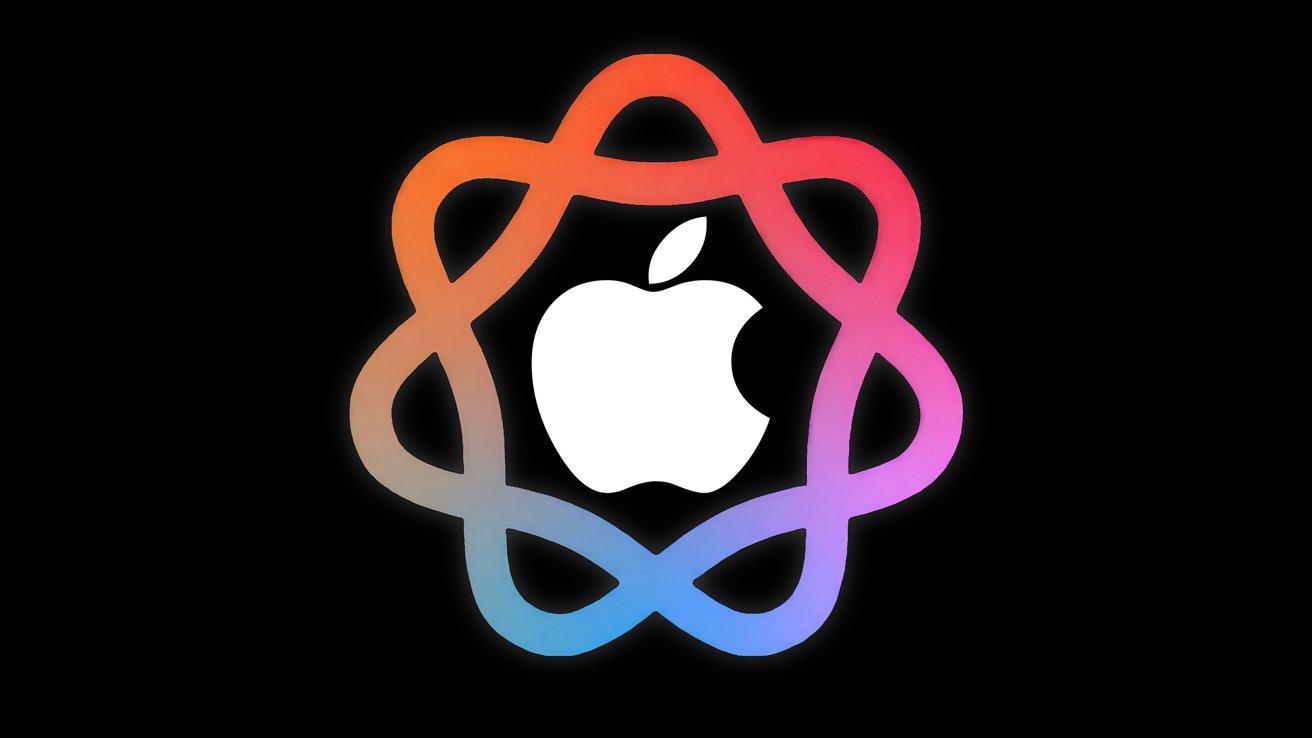
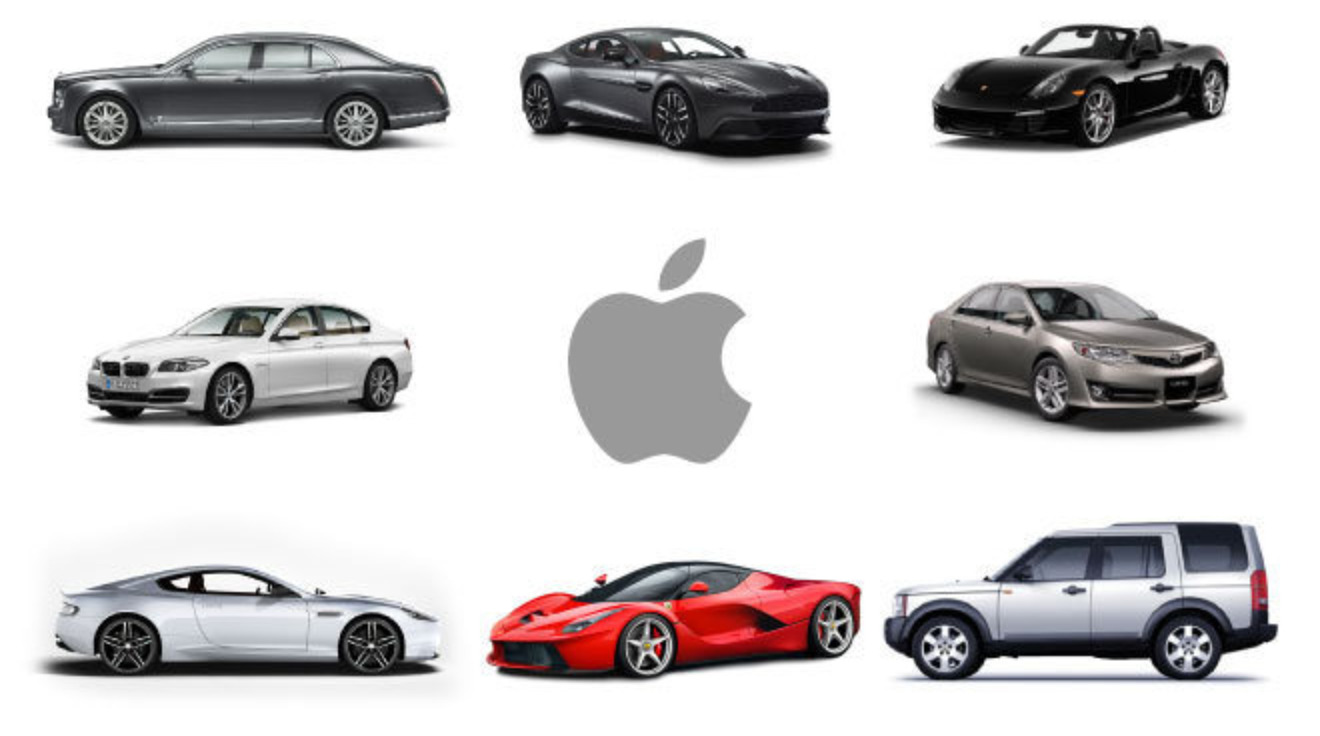
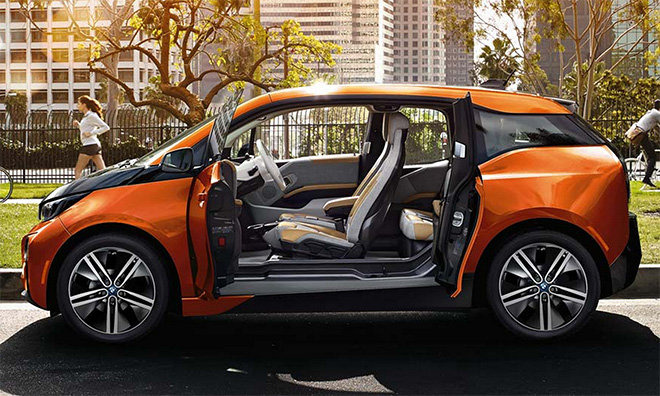
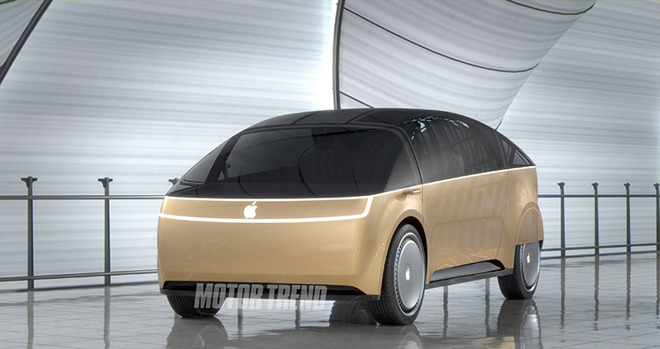
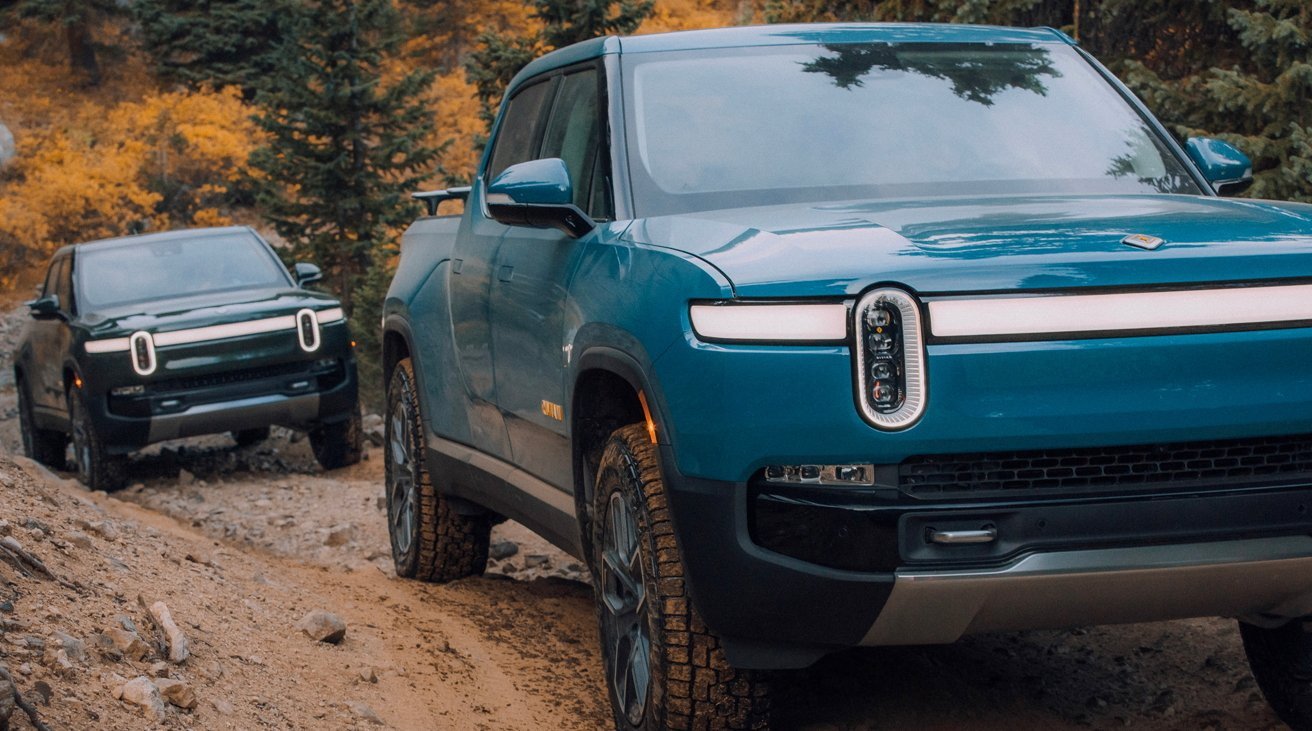
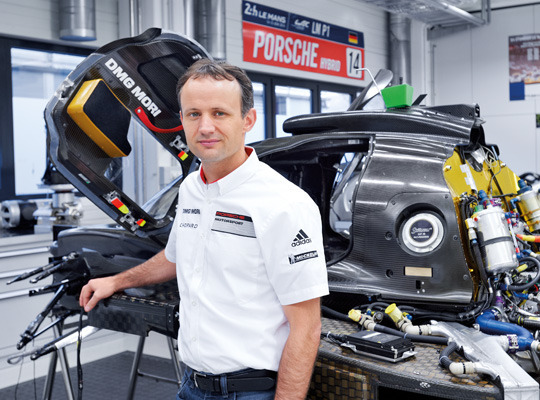

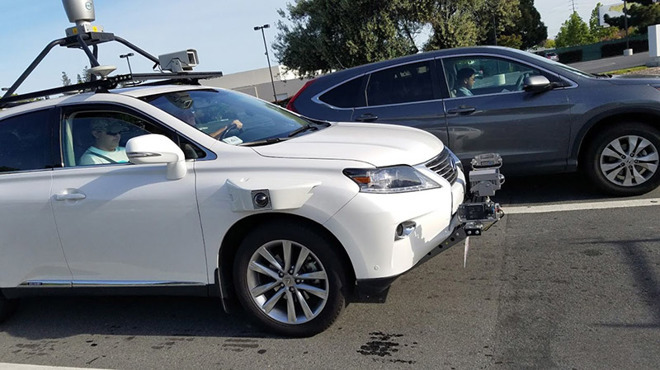
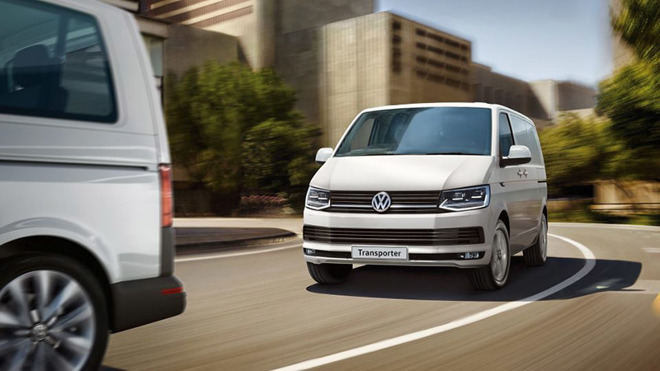
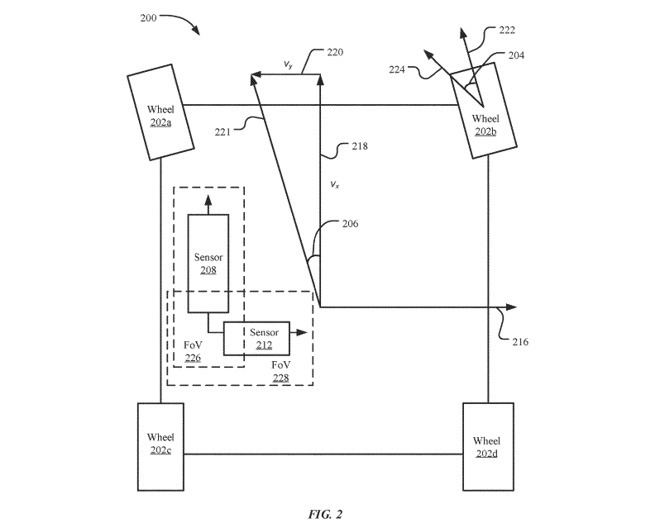
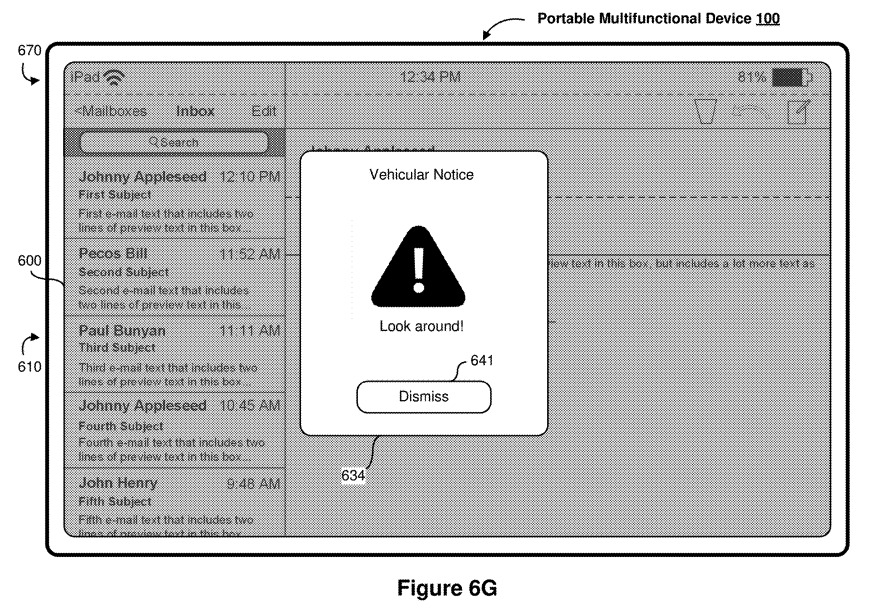
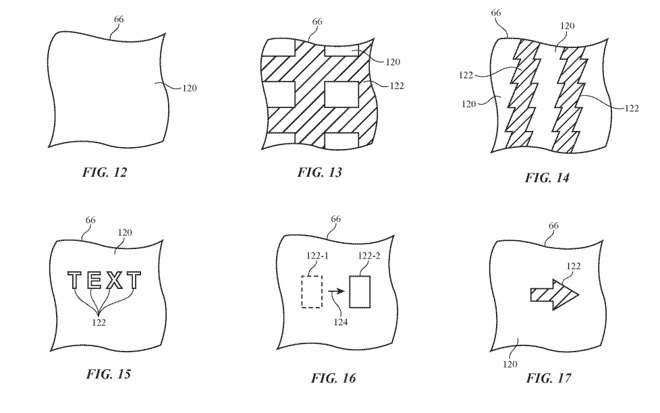
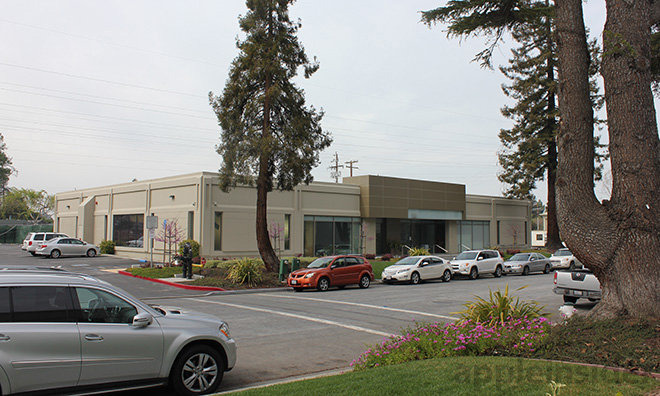
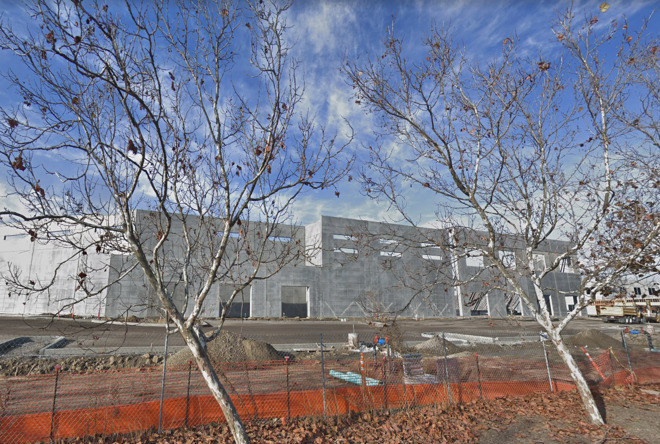
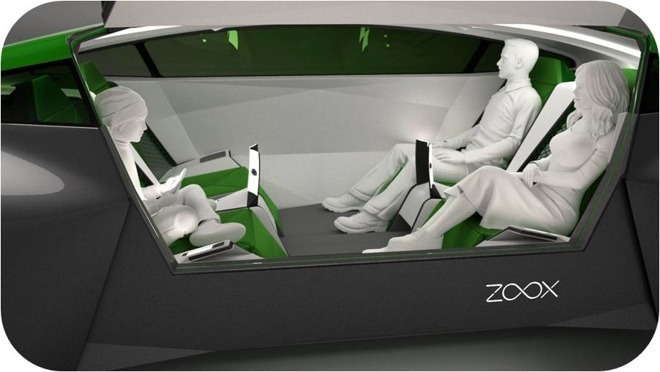
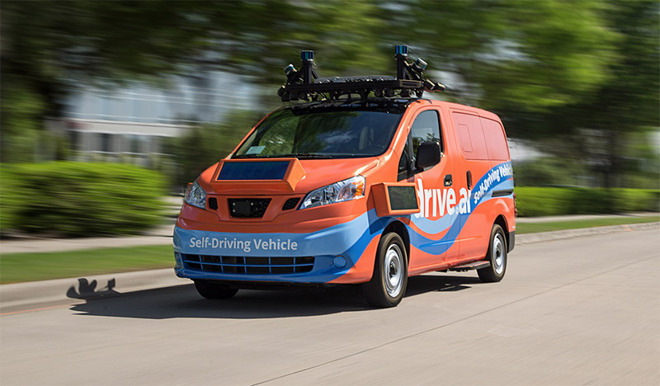
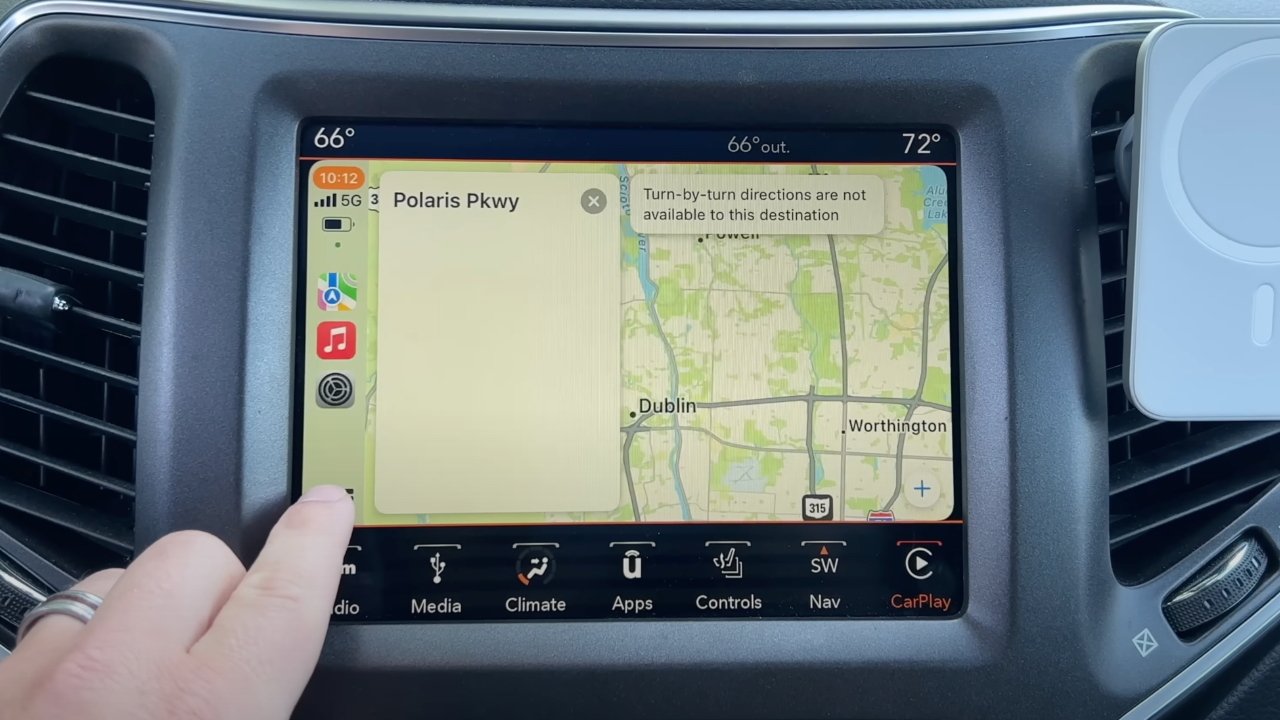
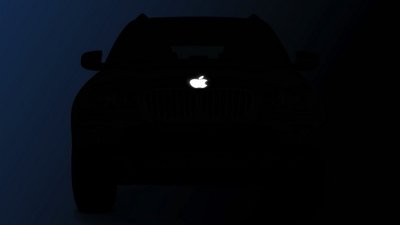
 William Gallagher
William Gallagher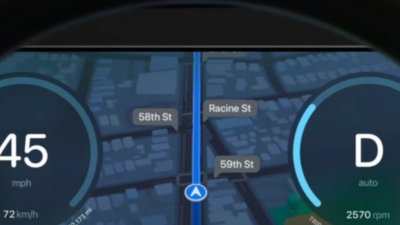
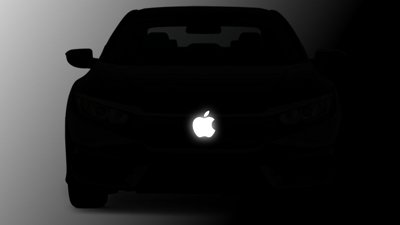
 Wesley Hilliard
Wesley Hilliard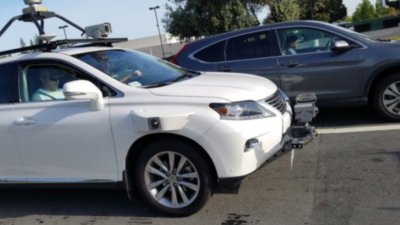
 Malcolm Owen
Malcolm Owen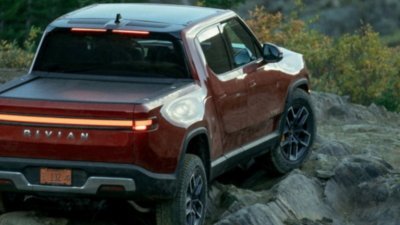
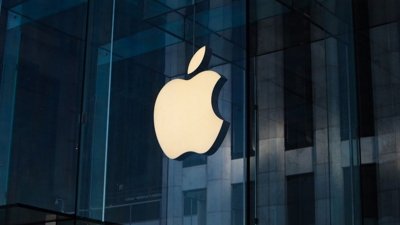
 Andrew Orr
Andrew Orr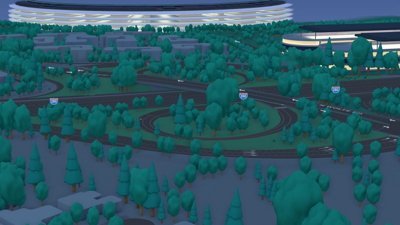
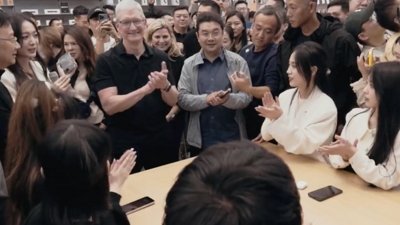
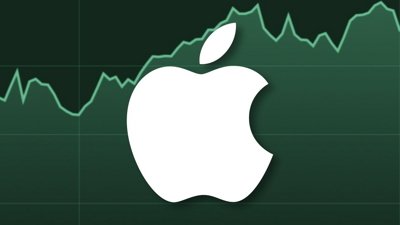
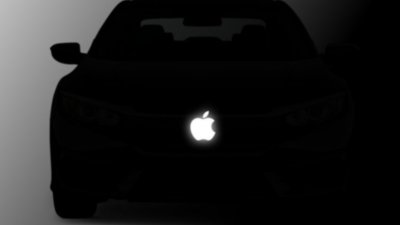
 Charles Martin
Charles Martin